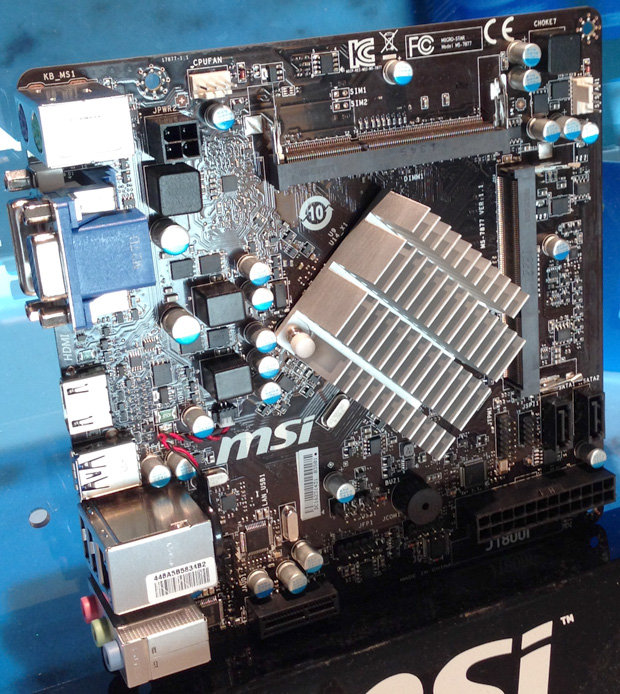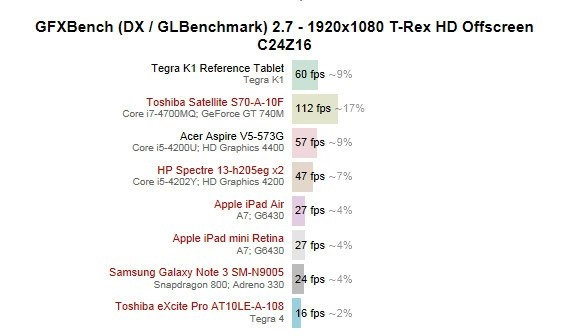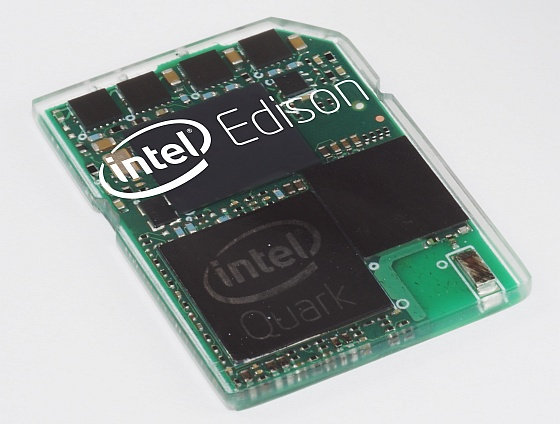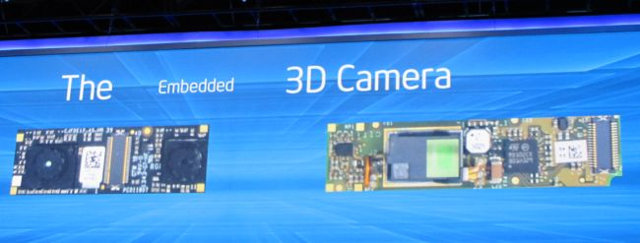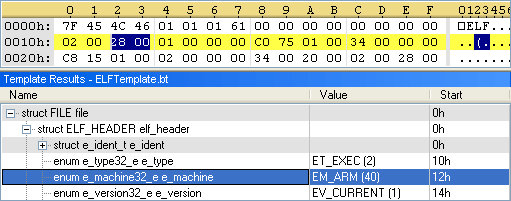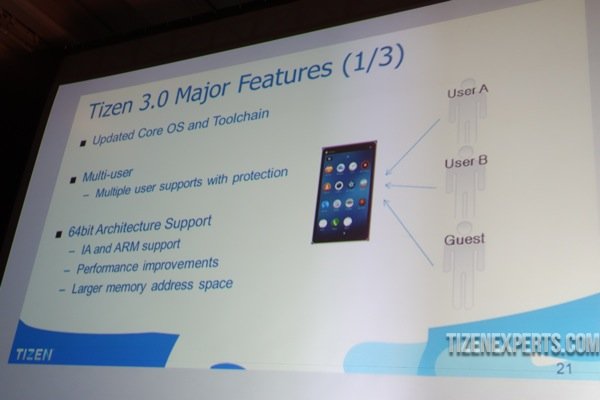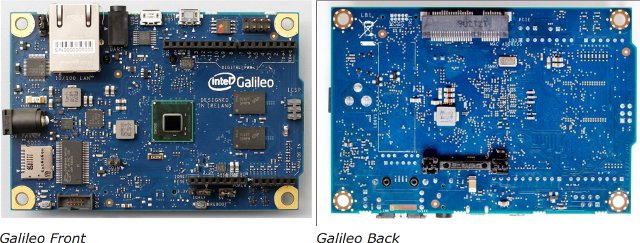We’ve now got plenty of low cost and low power ARM based boards and devices, but Intel is not sitting by idly, and in recent years they’ve worked to greatly reduce the power consumption of some of their processors, and relatively low power, cost effective Intel based motherboards will be available later this year. For example, MSI J1800i will be based on Intel Celeron J1800 dual core Bay Trail processor with 10W TDP, 64-bit support, and cost around $60 when it becomes available end of January or in February. Here are some of the specifications of this motherboard: SoC – Intel Celeron J1800i dual core @ 2.41 with integrated Intel HD graphics System Memory – 2x DDR3-1333 SO-DIMM slots (Up to 8GB) Storage – 2x Serial ATA 3Gbps ports Video Output – HDMI, VGA, and DVI Connectivity – 1x Ethernet USB – 2x USB 3.0 host ports, 4x USB 2.0 […]
Tegra K1 based Devices Could be Just as Fast as Mid Range Intel Core i5 Laptops
Some benchmark results comparing Nvidia Tegra K1 reference tablet to Intel based laptops show the latest ARM SoC matches and even outperforms many Intel devices, at least when it comes to 3D performance thanks to the 192-core Kepler GPU found in Tegra K1. In T-Rex HD Offscreen test in GFXBench 2.7.5, Tegra K1 is hown to be about 4 times faster than Tegra 4, over twice as fast as Qualcomm Snapdragon 800, and interestingly it outperforms some Intel laptop such as Acer Aspire V5-573G powered by an Intel Core i5 4200U processor with HD Graphics 4200 GPU. It’s still twice as slow as a machine with an Intel Core i7-4000MQ and Geforce GT 740M. CPU performance will probably be equivalent to some Intel Core i3 machine however, at least for the quad core ARM Cortex 15 version, but that still probably means it’s very likely we’ll find computers and laptops […]
Intel Unveils Edison Board for Wearables at CES 2014 Keynote
After an earlier Intel presentation about Intel RealSense Technology by Mooly Eden, Intel Senior Vice President and General Manager, the newly appointed Intel CEO, Brian Krzanich, officially opened CES 2014 with the pre-show keynote. This time there was nothing about processors for PCs, and the announcement the most interesting and relevant to this blog was Intel Edison, a tiny SD-card sized board powered by a dual core Quark SoC. Specifications: SoC – Unnamed and new dual core Intel Quark SoC @ 400MHz manufactured with 22nm process technology. MCU – Unnamed Intel MCU (MCS 51??) to manage I/Os and other baseline functions. System Memory – LPDDR2 Storage – NAND Flash Connectivity – Wi-Fi and Blutooth 4.0 LE Dimensions – Just like an SD card The board will support Linux, and common open source tools used by the marker community. It will also support Wolfgram language and Mathematica. There will also be […]
Intel Unveils RealSense Technology with 3D Camera, Voice Recognition
Mooly Eden, Intel Senior Vice President and General Manager, gave a presentation at CES 2014 about Perceptual Computing, introducing Intel RealSense Technology that is currently comprised of a 3D “depth” camera, and Nuance Dragon Assitant voice technology in order to bring “Natural, Intuitive, and Immersive user experiences”. Dragon Assistant is a personal voice assistant that uses natural language understanding for Windows 8 Ultrabooks, notebooks, all-in-ones (AIOs), and tablet devices, and will be available in computers (Ultrabooks, AIO computer, and Tablets) from Acer, Dell, HP, Asus, Toshiba, and Lenovo in 2014. It’s very similar to what’s you’ve got with Siri on iOS or Google voice search, but the quick demo they’ve shown it could understand you without being specific. You awake the assistant by saying “Hey dragon”, and they tried with queries such as “I want to watch an episode of Family Guy” that started Hulu with a list of relevant […]
Linux.Darlloz Worm Targets Embedded Linux Devices
Symantec has recently discovered a new Linux worm, called Linux.Darlloz, that targets Internet-enabled devices running Linux in addition to traditional computers. That means devices such as home routers, set-top boxes and security cameras could be at risk of infection, although no attacks against non-PC devices have been confirmed yet. The worm exploits an “old” PHP vulnerability, which was patched in May 2012 (PHP 5.4.3, and PHP 5.3.13), and currently only affects Intel (x86) based systems. So you’d need an embedded system powered by an Intel processor, running Linux and PHP to be at risk. Having said that, Symantec also explains code for other architectures such as ARM, PPC, and MIPS, is also present in the worm, and these systems could potentially be at risk too with small modifications. Here’s how the worm operates: Upon execution, the worm generates IP addresses randomly, accesses a specific path on the machine with well-known […]
Tizen 3.0 Features & Tizen Lite Unveiled
We have just learned about NX300M camera, the first Tizen device, based on Tizen 1.0, but development of the new mobile operating systems is still going on, and the key features of Tizen 3.0, as well as Tizen Lite, Tizen for low-end hardware, have been unveiled at the Tizen Developer Summit on 11th of November 2013. Tizen 3.0 features: Update core OS and toolchain Multiple user support 64-bit Intel and ARM architecture support (New) 3D UI Framework with 3D rendering for 2D and 3D objects in 3D, and a dynamic animation library WayLand based compositor replacing X Crosswalk – HTML5 based application runtime based on Chromium/Blink Tizen 3.0 release is scheduled for Q3 2014, so the first Tizen smartphones and tablets which are expected for Q1 2014 will probably ship with Tizen 2.2.1, or even possibly with an earlier version. Android KitKat 4.4 has been optimized to run smoothly on […]
$69 Intel Gallileo Development Board Combines x86 Processor and Arduino Compatibility
After UDOO, a Linux development board powered by Freescale i.MX6 ARM Cortex 9 processor and an Atmel SAM3U MCU for Arduino compatibility, here’s another single board computer (SBC) that both runs Linux, and is claimed to be software and hardware compatible with shields designed for Arduino Uno R3: Intel Gallileo. Instead of using two ARM processors, the board is powered by Intel Quark SoC X1000, a 32-bit Pentium class SoC, that handles both Linux and I/Os. Intel Galileo Specifications: SoC – Intel Quark SoC X1000 @ 400MHz with 16 KBytes on-die L1 cache, 512 KBytes of on-die embedded SRAM, single thread, single core, constant speed, ACPI compatible CPU sleep states supported, and integrated Real Time Clock (RTC). Max TDP: 2.2W. System Memory – 256 MByte DRAM Storage – 8 MByte Legacy SPI Flash for bootloader and sketch + 11 KByte EEPROM + optional microSD card (Up to 32GB) Connectors: 10/100 […]
Embedded Linux Conference Europe 2013 Schedule – Build Systems, Security, Device Tree, Debugging & Profiling Techniques, and More
Embedded Linux Conference Europe 2013 will conveniently start right after LinuxCon 2013, last 2 days (October 23-24), and take place at the same location: the Edinburgh International Conference Center, Edinburgh, United Kingdom. The Linux Foundation has published the schedule for the conference, so I’ll make my own virtual schedule with sessions that I find particularly interesting. Thursday – 24th of October 9:30 – 10:10 – Timeline For Embedded Linux by Chris Simmonds, Consultant, 2net Limited Today, Linux is woven into the fabric of our technology. Things such as printers, routers, TVs and phones all have their own “Inner Penguin”. Yet it was never originally intended to be used beyond desktop and server PCs. A lot of things had to happen before Linux could break out of the PC environment and make its way in the world as a jobbing jack-of-all-trades. Since the early beginnings of embedded Linux in the late 1990’s many people have contributed […]


